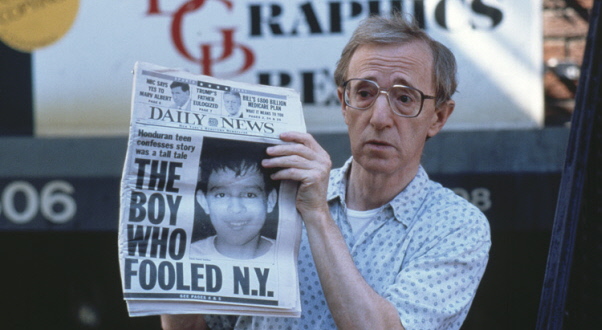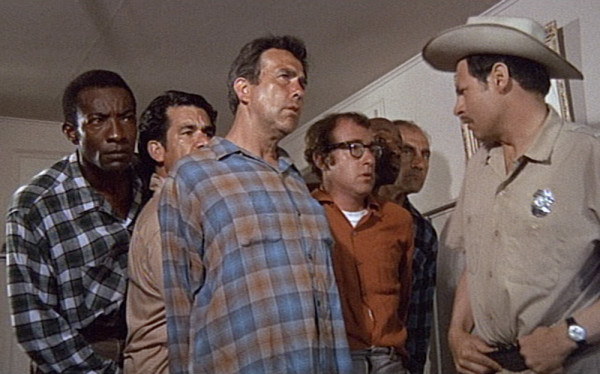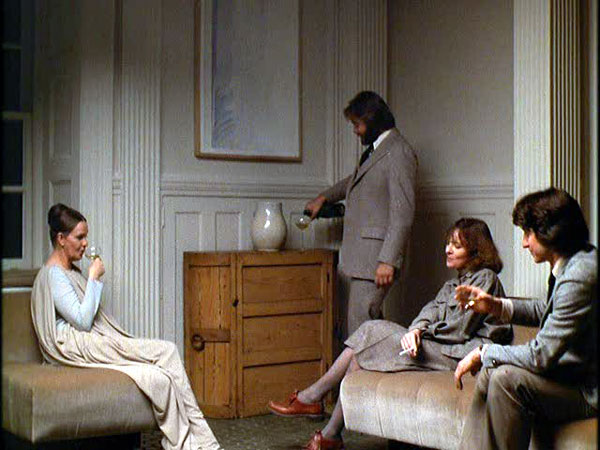When writer, stand up comedian and TV personality Woody Allen directed his first feature film in 1969, it would have seemed highly unlikely that by 2015 Allen would have made over 40 features and raked in hundreds of millions of dollars at the box office.
Working out of his home base of New York City, Allen wrote original screenplays and directed them with workmanlike efficiency, producing virtually a film a year decade after decade. His prodigious output and his status as a critical favorite have resulted in the most unlikely of circumstances; Woody Allen has become the dominant independent filmmaker of our time, an auteur of high acclaim, and a unique visionary in the media of film.
His early output of films was dependent largely on slapstick humor and Allen’s self proclaimed status as a lovable loser and nebbish. In 1977, his career took a sudden upswing, as Annie Hall was a critical and box office sensation and the winner of a slew of Oscars, including Best Film, Best Director and Best Original Screenplay.
After a period of varied experimentation, Allen settled in to producing a steady and reliable output of films in the 1980’s and early 90’s, only to see his career sag in the late 90’s and early 2000’s as audiences seem to tire of his New York based dramas.
In 2005, nearing the age of 70, Allen released the successful Match Point, which revived his career and initiated a new appreciation by a younger audience that was unfamiliar with much of Allen’s past work. He has scored a series of successes since then, including 2011’s Midnight in Paris and 2013’s Blue Jasmine.
This list covers the films that Allen has made that were for some reason indifferently received or under appreciated by audiences of the time, but still rank amongst his best work. With one exception, all of these films were written and directed by Woody, and most of them feature him as a lead actor as well. They are ordered chronologically, based on year of release.
1. Take the Money and Run (1969)
Although most filmographies list What’s Up, Tiger Lilly (1966) as Woody’s first directorial effort, the first feature film that Woody actually made as director was 1969’s Take the Money and Run.
A mock documentary that anticipates such films as This is Spinal Tap and Waiting for Guffman, Take the Money and Run tells the story of Virgil Starkwell (Allen), an incompetent thief who seems incapable of pulling off even the most basic of crimes. After muffing a bank robbery when he misspells the hold up note (“What’s a gub?” “No…that’s GUN!”), Virgil is sent to prison. He escapes prison by accident, but his efforts to go straight and to be reunited with his family lead him back to crime as well as to prison several times.
The film did respectably well at the box office and was mostly praised by critics, who appreciated Allen’s unique brand of humor and offbeat world view. But Take the Money and Run has been largely overlooked in the years that followed, overshadowed by the prodigious volume of films that the director has produced since.
The ‘mockumentary’ style of the film has come into vogue in recent years, largely through the work of Christopher Guest and Sacha Baron Cohen, and Allen should be credited for helping create this sub-genre of film. Much of the humor of the film derives from the contrast between Allen’s established character, the nebbishy New Yorker, and the situations that he is put in, such as working on a rural chain gang or trying to play the cello in a marching band.
Take the Money and Run also initiated a series of funny films that Allen made lasting throughout the early and mid 1970’s, until he achieved even more success and began exploring more complex, serious themes, shifting away from pure comedies into various forms of melodrama.
2. The Front (1976)
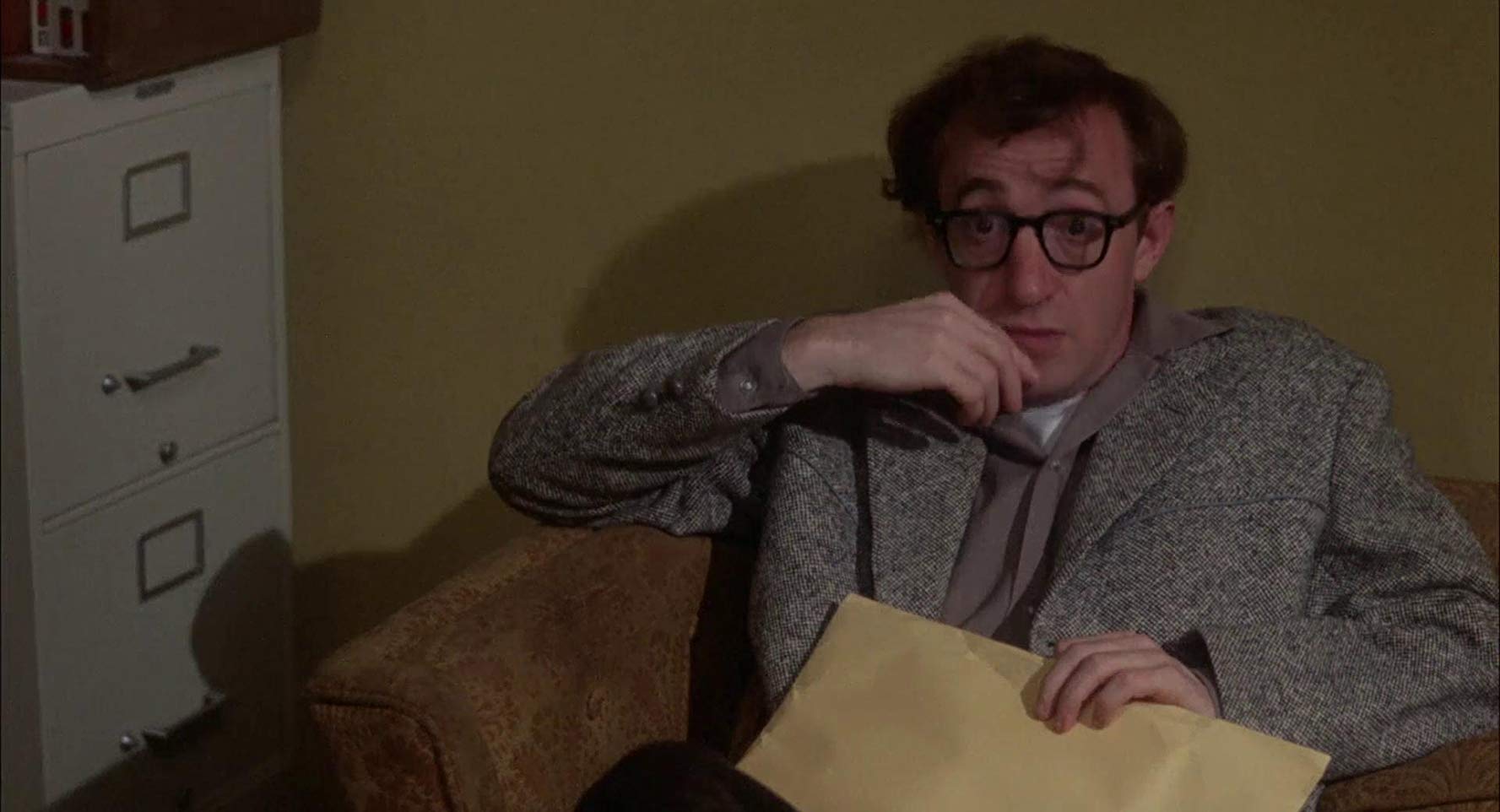
In 1976, after seven years of filmmaking as writer and director, Allen agreed to star in The Front, a film directed by veteran Martin Ritt and written by Walter Bernstein. Allen is Howard Prince, a deli cashier who is friends with writer Alfred Miller (Michael Murphy) and who agrees to be a ‘front’ for Miller and others during the blacklist era of the 1950’s, submitting scripts for blacklisted writers under his own name.
During the course of the story, Howard befriends actor Hecky Brown (Zero Mostel), who ends up committing suicide at the prospect of being blacklisted and losing his livelihood. Howard is eventually forced to testify before HUAC and faces the prospect of deciding between being jailed for contempt of Congress and turning in those for whom he has been fronting.
The culmination of the period in which Allen made his “early, funny films” (as the aliens in Stardust Memories call them), The Front was a modest success when it was released in 1976, but the film has been virtually forgotten since as the turmoil and drama of the blacklist have receded into Hollywood’s past. Allen plays a character who is – as he was in Bananas, Sleeper and Love and Death – swamped an overwhelmed by situations and circumstances that are much larger than he.
Again, much of the humor derives from these situations, as Woody attempts to control his ‘career’ as a writer, on one hand enjoying the success and money that comes with it while on the other hand trying to skirt the ire of politicians who are cracking down on so called Communists.
A mores serious film that anticipates the biographical, personal movies that Allen would begin to make in the years to come,The Front is worthy of another look. It is a film that gives a humorous and poignant take on a difficult time in the history of Hollywood and America.
3. Interiors (1978)
After the enormous success of Annie Hall in 1977, Allen had a newfound freedom that allowed him to escape the pigeonhole of comedic writing and acting, and to expand his range and style. This freedom resulted in a period of experimentation that followed for several years, with a mix of success both commercially and critically.
The first film he made after Annie Hall was Interiors, an homage to one of Allen’s inspirations, Swedish director Ingmar Bergman. Interiors was such a huge departure from his previous work that audiences weren’t sure how to react and, as a result, the film was a relative failure at the box office, although it received mostly positive reviews from critics.
The film centers around Arthur (E.G. Marshall) and his mentally unstable wife Eve (Geraldine Page), as well as their three daughters, Renata (Diane Keaton) a poet, Flyn (Kristin Griffith) a vain actress and Joey (Mary Beth Hurt), who is finding it difficult to settle on a career.
When Arthur decides to separate from Eve, the family is thrown into tumult, which only increases when he comes back from a vacation with Pearl (Maureen Stapleton), a vivacious new woman in his life. The story comes to a head at the wedding of Arthur and Pearl, when the three daughters find themselves at odds with their parents, their spouses and partners, as well as each other.
Although Allen is on the relatively dry ground of Chekhovian drama, he still manages to find humor in some of the situations and lines of dialogue in the film, although they are admittedly few and far between when compared with his earlier films.
Interiors is sterile and icy at parts, but it seems clear to the discerning viewer that this style is only present as a manifestation of the film’s characters and their tortured lifestyles. Pearl seems to represent life and all that is good with it, while the nervous and embittered Eve represents death, and the other characters in the film must decide ultimately on which side they are going to line up.
Interiors was an enormous change of style for Allen, and he later told a friend that he had many qualms about the film, saying “It’s always been my fear. I think I’m writing Long Day’s Journey into Night and it turns into Edge of Night.” For a soap opera, Interiors is a very good one, and is worth seeing.
4. Stardust Memories (1980)
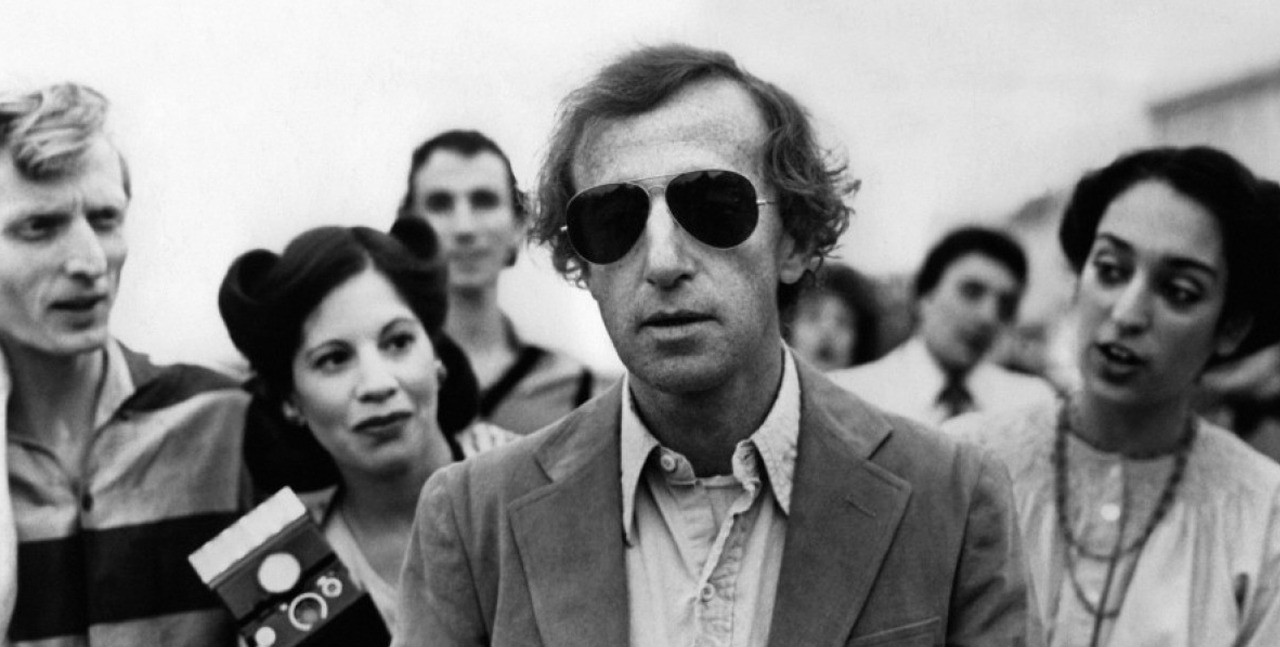
After Interiors, Allen returned to safer ground with Manhattan, a film that was similar to Annie Hall and one that was embraced by filmgoers and critics alike. But, again, he changed courses after Manhattan, releasing Stardust Memories in 1980, a dark film about life as a director that was a direct homage to Federico Fellini’s 1963 film 8 1/2.
Woody stars as Sandy Bates, a film director suffering from a loss of confidence, who is attending a weekend retrospective of his films at a Victorian seaside hotel. The situation allows Allen to contemplate his status as celebrity and auteur, as Bates is alternately worshiped and vilified by the fans and cinephiles attending the festival.
In the course of the movie he revisits moments with his tempestuous ex-girlfriend Dorrie (Charlotte Rampling), as well as the new, younger woman that he meets and is attracted to, Daisy (Jessica Harper). In addition, Sandy also confronts some space aliens in the woods, who encourage him to return to the “early, funny films” that made up his earlier work.
Stardust Memories is one of those rare moments in an artist’s career when he makes such a profound, courageous and bold statement that it lands far over the head of his audience. The film’s black and white look seems at once to be an homage to the European directors that Allen admired, as well as an evocation of the stark, daring works of photographer and fellow New Yorker Diane Arbus.
In addition, Stardust Memories was also undeniably prescient in its outright condemnation of fan worship, as ex-Beatle John Lennon was gunned down on the streets of New York by a deranged fan just months after the film was released. Of all of Woody Allen’s films, Stardust Memories remains a personal favorite of the director’s, even while it was ignored by audiences and skewered by critics.
However, over time, Stardust Memories seems to have improved in the view of many, and the film is now rightfully regarded as an overlooked masterpiece in the director’s oeuvre. After Stardust Memories, Woody Allen would never make another film that so boldly proclaimed his world view. If you haven’t seen it, make the effort to see Stardust Memories, one of Woody Allen’s best – and most sadly misjudged – films.
5. A Midsummer Night’s Sex Comedy (1982)
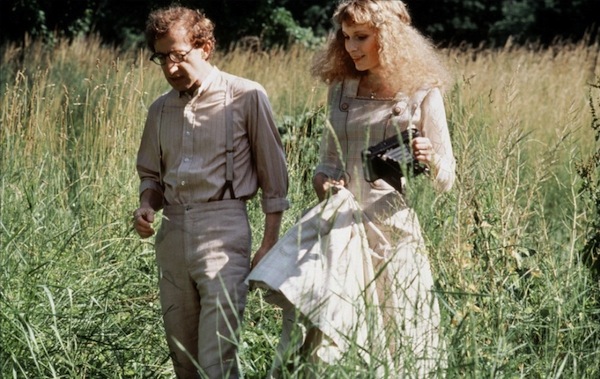
After the rough treatment given to Stardust Memories, Allen did not release a film in 1981, concentrating instead on the opening of his Broadway play, The Floating Light Bulb (which also flopped).
A major theme of The Floating Light Bulb is magic and the place that magic plays in our lives, and this seems to also be a pre-occupation of A Midsummer Night’s Sex Comedy, which was loosely based on Ingmar Bergman’s Smiles of a Summer Night. The film also was the first film that Allen made with his new girlfriend, Mia Farrow, a personal and professional partnership that would last for the next decade and result in the making of over a dozen films.
In A Midsummer Night’s Sex Comedy, Allen plays a crackpot inventor in the early 20th century, who is married to Adrian (Mary Steenburgen). Adrian’s cousin is the philosopher Leopold (Jose Ferrer), who comes for the weekend and brings along his much younger fiancee Ariel (Farrow).
Also present are Maxwell (frequent Allen co-star Tony Roberts) and Dulcy (Julie Haggerty). The magical atmosphere of the mid-summer seems to take its effect on the group, as the various couples engage in amorous romantic adventures, both with their own partners and the partners of others.
Smarting from the reaction to some of his recent stylistically diverse films, Allen seemed to want to make it clear to his audience that he was returning to familiar comedic ground in this film, which is apparently why he included the word “comedy” in the title. Unfortunately, many in his audience were still expecting a return to the interpersonal comedies of Annie Hall and Manhattan, and so snubbed this film on its release in the summer of 1982.
But A Midsummer Night’s Sex Comedy is an interesting departure for Allen, and the film initiates a period in which he made a number of ensemble works, culminating with Hannah and Her Sisters (1986), his most popular film of the 1980’s. While not one of his great films, A Midsummer Night’s Sex Comedy is still worth seeing if you get the chance.
